The Pacific Fleet Submarine Museum is one of the main attractions at Pearl Harbor in Hawaii that will give you insight into the role that the “silent service” of submarines played in World War II and also in the Cold War.
You’ll learn more about the the crucial role of submarines during warfare and get an idea of what it was like to serve in a submarine as you get to interact with sonar radars, periscopes, and check out conning towers and torpedoes.
In this article, I’ll give you an overview of what to expect when you head to the Pacific Fleet Submarine Museum.
Pacific Fleet Submarine Museum campus overview
The Pacific Fleet Submarine Museum campus is just one part of the overall Pearl Harbor experience and it’s home to the:
- The USS Bowfin submarine
- Pacific Fleet Submarine Museum
- Park with outdoor artifacts
- Shaded eating area and food truck
- Gift shop
The Pacific Fleet Submarine Museum was recently renovated at the tune of $23 million and re-opened in 2021 so it has a much more modern feel to it and is one of the newest tourist attractions at Pearl Harbor.
If you purchase a ticket to the Pacific Fleet Submarine Museum you get entry to the USS Bowfin and all of the surrounding sites.
You’ll probably want to spend about 1.5 to 2 hours exploring all of the Pacific Fleet Submarine Museum campus sites.
The good news is that you can come back later in the day if you have to head out to catch another tour such as a boat shuttle to the USS Arizona.
Tip: If you want to buy tickets to multiple Pearl Harbor attractions (USS Bowfin, Pacific Aviation Museum, and Battleship Missouri) check out this option online.
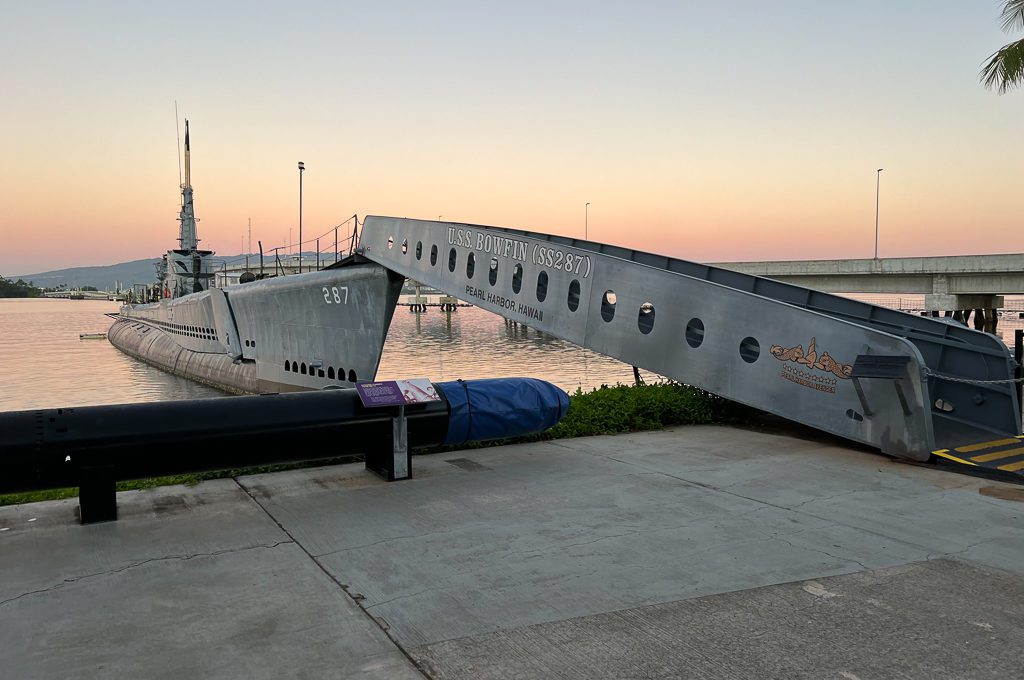
How to visit the Pacific Fleet Submarine Museum
The Pacific Fleet Submarine Museum is located on the north side of the Pearl Harbor National Memorial area. After you go through the main entrance, you will head to the right to make your way to the submarine.
You should see signs pointing you the right way but basically it’s on the opposite side of where you line up for the USS Arizona shuttle boat.
It’s pretty close to where you hop on the shuttle bus to take you over to Ford Island where you can visit the USS Missouri, USS Oklahoma Memorial, and Aviation Museum.
Related: Pearl Harbor Ultimate Guide
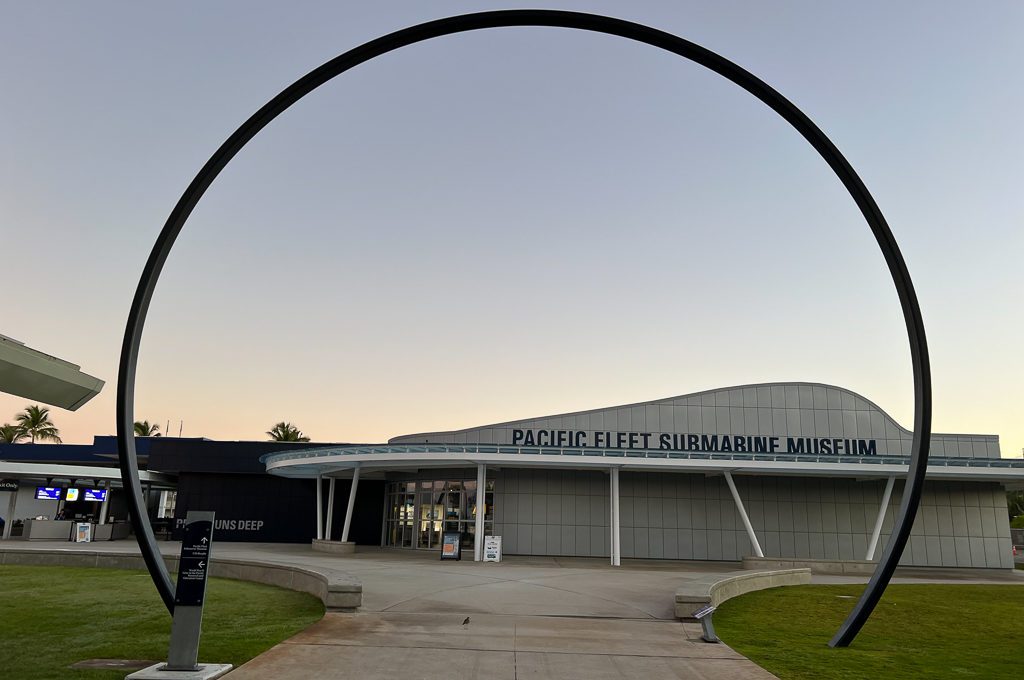
You will need to buy tickets in order to visit the Pacific Fleet Submarine Museum and here are the prices for the tickets:
• Adult General: $21.99
• Children General (4-12 years): $12.99
Military members and Kama’aina can get discounts:
• Adult (Military and Kama’aina): $16.99
• Child (Military and Kama’aina): $8.99
You can buy these online or you can buy them whenever you get there but I would advise you to just secure them online.
You’ll have to select the date of your visit but you do not have to lock in a specific time slot.
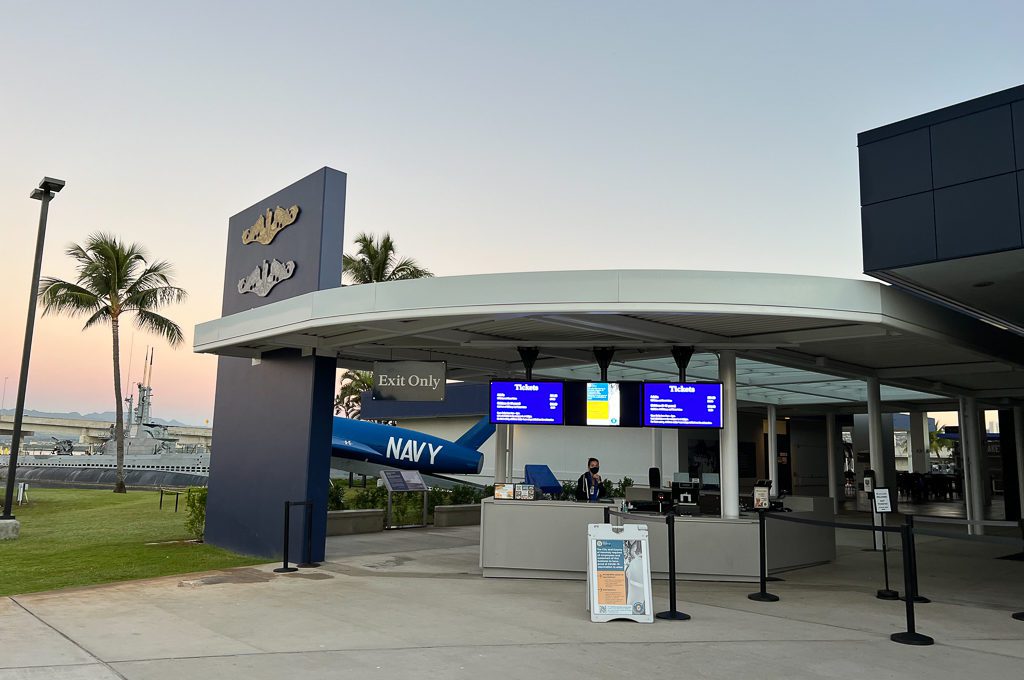
Pacific Fleet Submarine Museum experience
The Pacific Fleet Submarine Museum is basically divided into two separate sections or galleries.
The first section is mostly focused on the role submarines played in World War II in the Pacific.
The second section covers more modern times such as the Cold War and focuses on the evolution of submarines including the introduction of nuclear warheads.
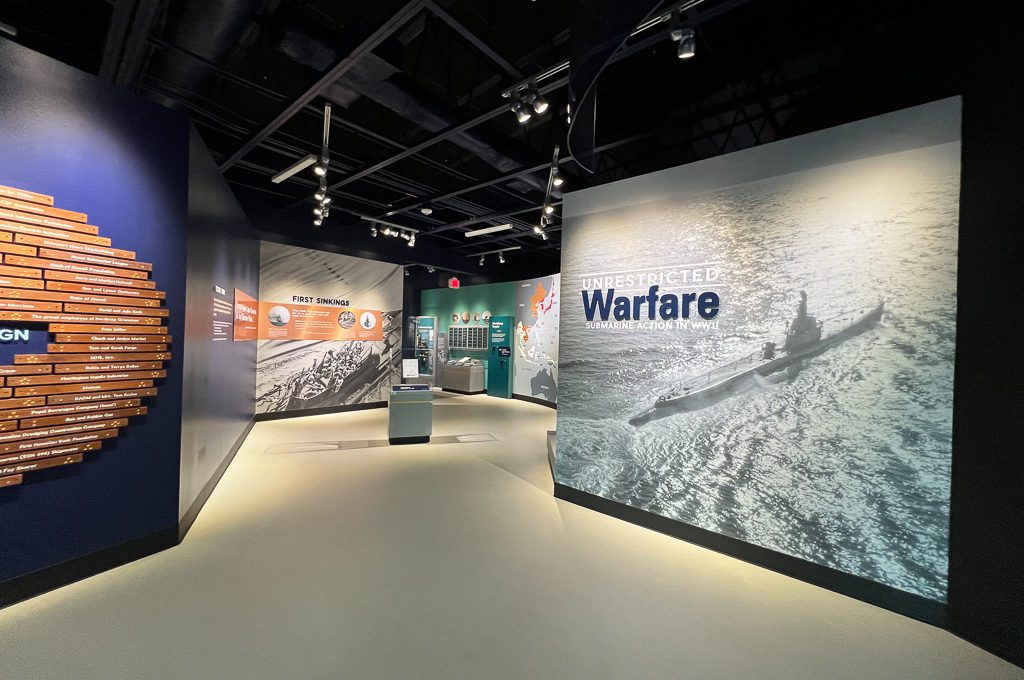
Context for your visit
Japan did not have many natural resources which is one of the main reasons why the war started for them in the first place.
So they relied on merchant ships coming in from various countries to transport all of the different resources that they needed to expand their empire.
US submarines helped with fighting warships and also rescue attempts of fallen pilots but their primary accomplishment in World War II was that they wreaked havoc on these Japanese merchant ships.
The US submarine force only made up approximately 2% of the US Navy but they were responsible for destroying over 60% of Japanese merchant shipping and over 30% of Japanese warships in World War II.
Thus, they had a huge outsized effect on the war relative to their size.
Their effectiveness did come at a price with 52 submarines and more than 3,600 officers and crewmen lost during World War II.
So as you stroll through the museum keep that context in the back of your mind because it will help you appreciate everything you see and interact with a little bit more.
If you have the time, I would recommend watching the video below as it is an excellent overview of how submarines were utilized during World War II.
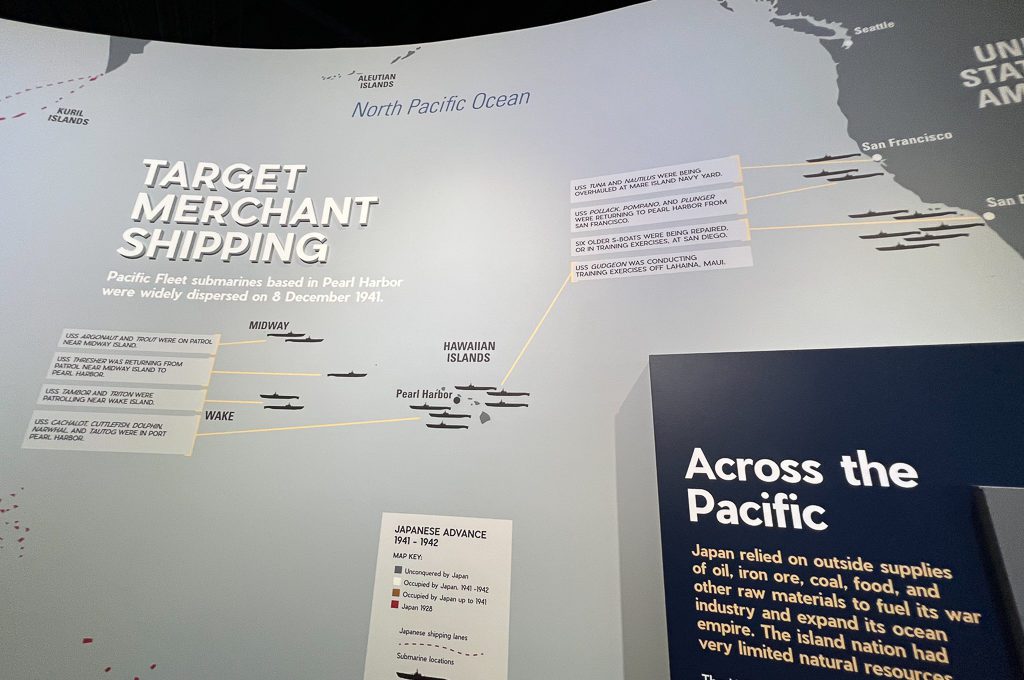
The World War II gallery is basically one large room and you can explore it in any order you would like.
That’s great for people like to randomly check out exhibit but makes a little bit more difficult for people who prefer more of a linear flow to a museum experience.
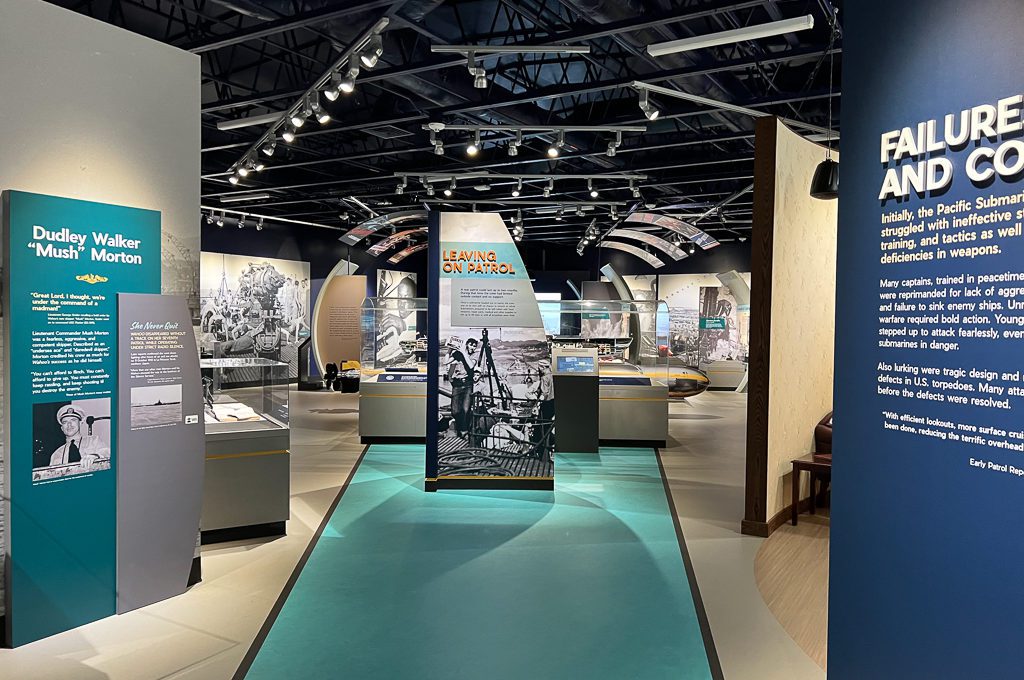
One of the first exhibits you’ll see is a scale model of the USS Bowfin.
If you have not already visited the submarine, this can help give you some insight into the different compartments you’ll be going through.
One thing that you don’t see on your tour are the batteries that reside at the bottom and it’s pretty cool to see them in this model. It was those batteries that the submarine relied on when submerged.
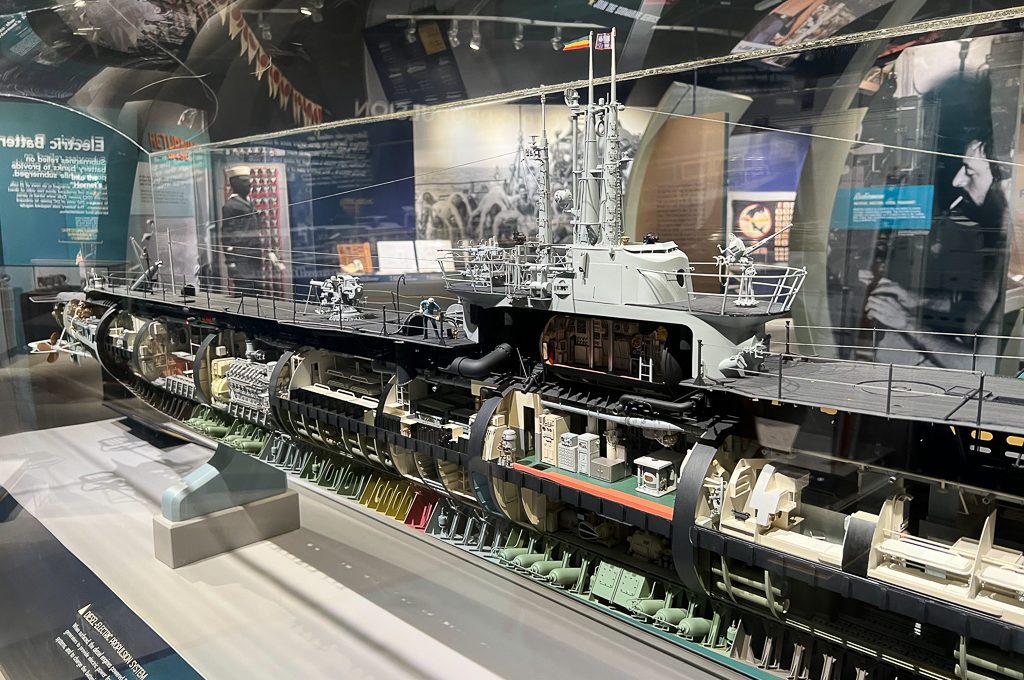
Another interesting artifact is the bell from the USS Bowfin.
When the bell was created, it wasn’t clear exactly what year the submarine would be launched and apparently after it was launched no one decided to update the bell so it’s still missing the year.
The bell actually went missing at one point but luckily was re-discovered in 1996 when it was given to the museum.
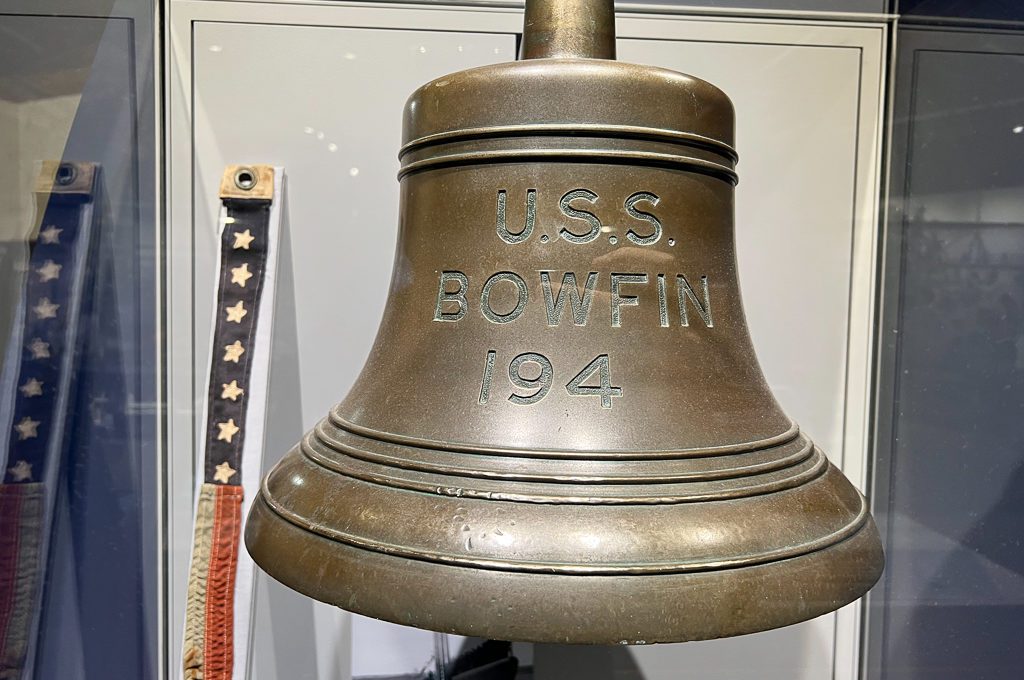
In the World War II gallery, you’ll find several different interactive exhibits that give you a sense of what it was like to work on a submarine.
You’ll get to test your hearing and eye sight on radar and periscopes to see how you would fare in the 1940s.
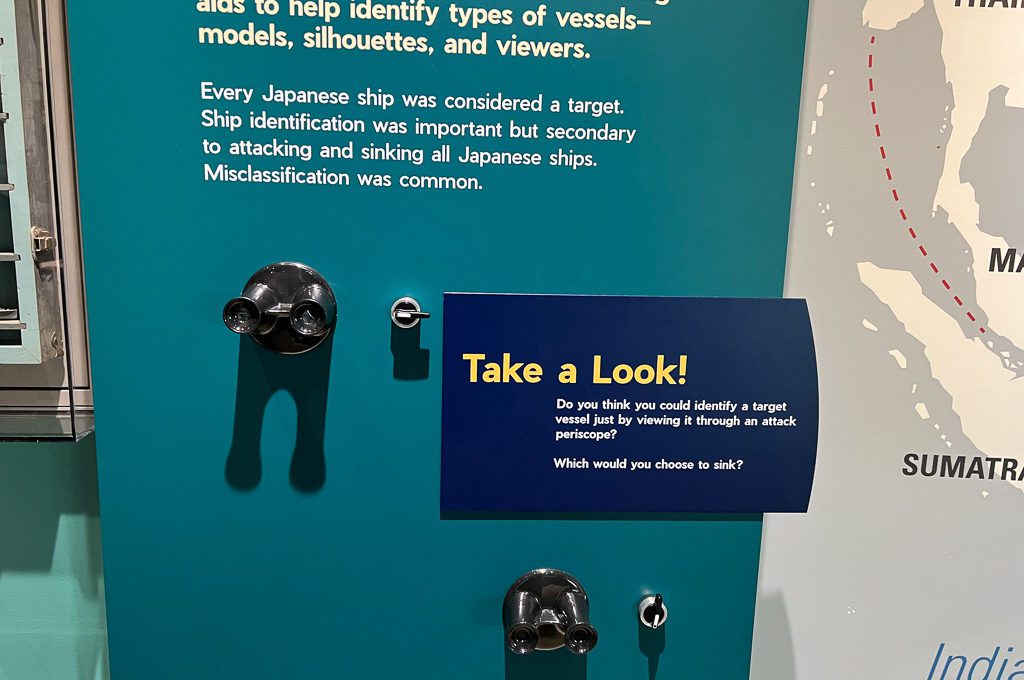
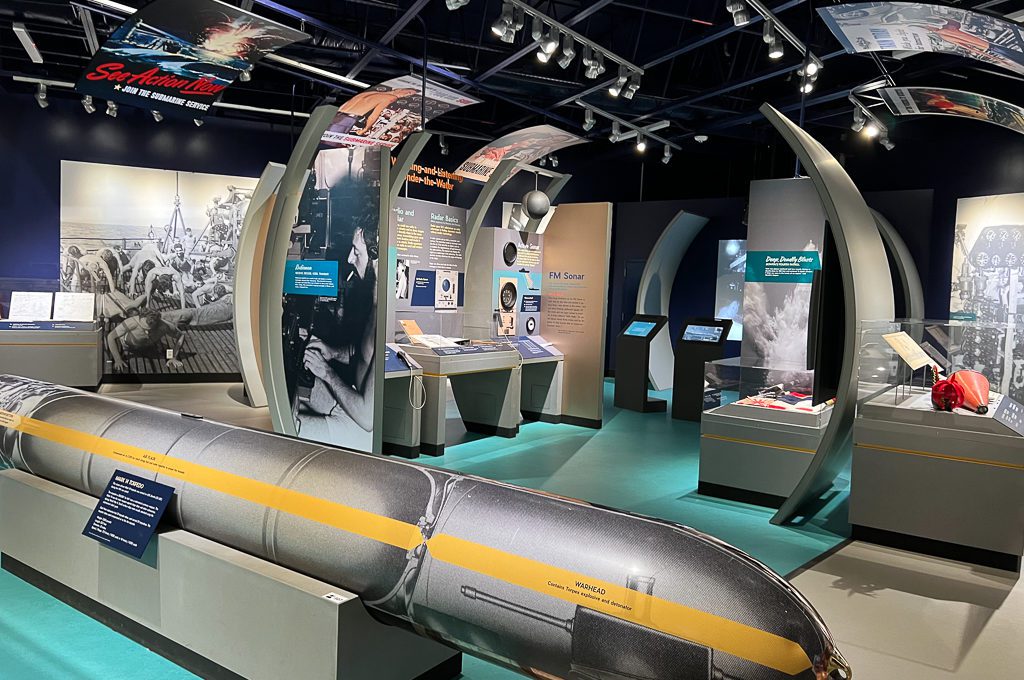
My decision making was very suspect when it came to firing torpedoes so hopefully you’ll make it further than I did.
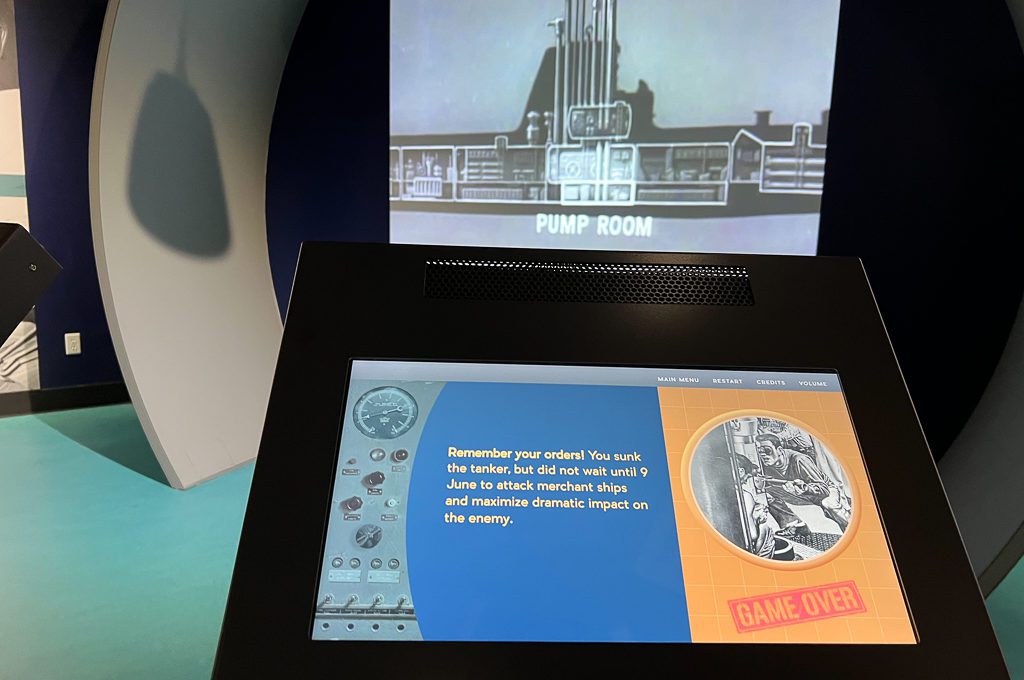
After you explore the World War II gallery, you can head over to the Cold War gallery.
The Cold War gallery gives you a lot of context around what was going on at the time and how submarines fit into the equation.
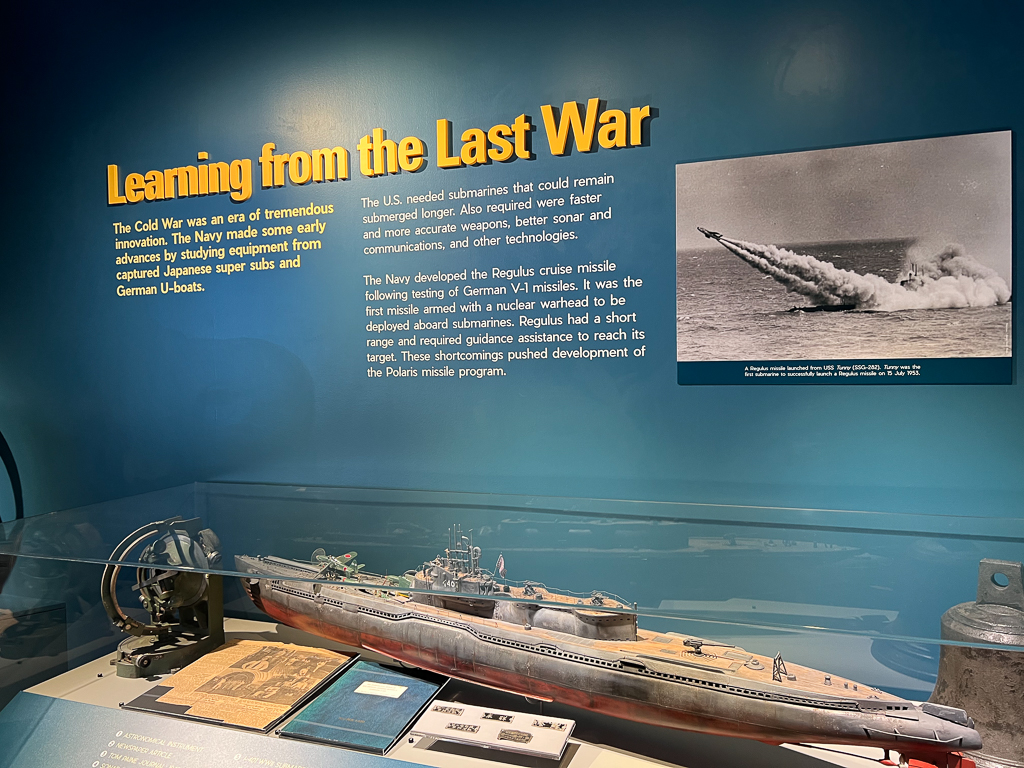
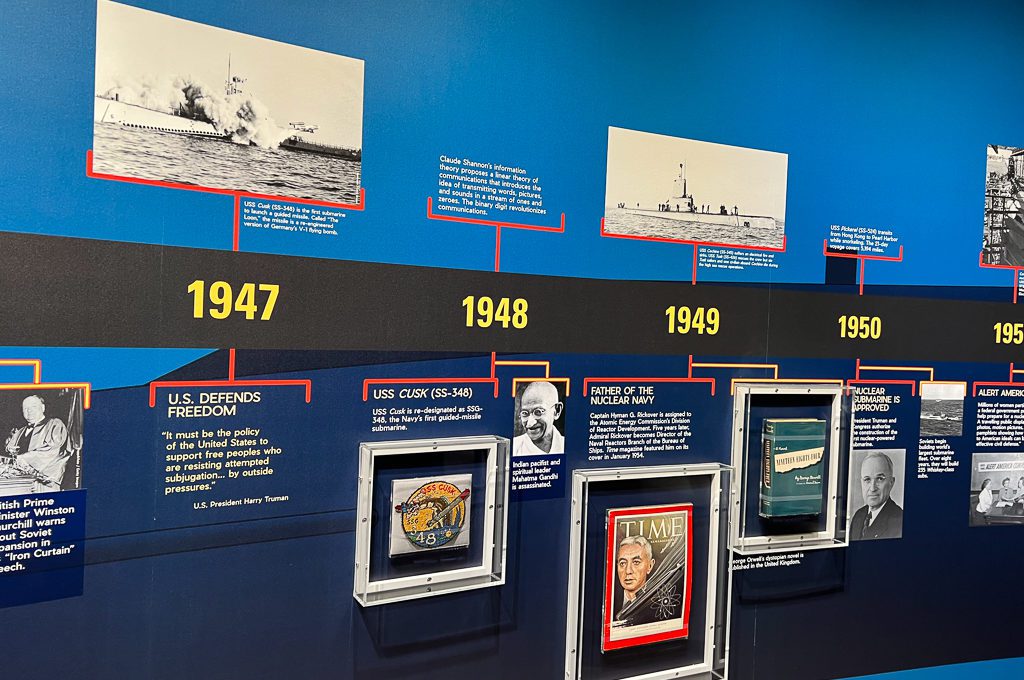
It introduces you to ballistic missiles and how they were used in submarines which I found to be pretty fascinating.
Having just visited the Titan Missile Museum in Tucson, Arizona a couple of months prior, it was really cool to see how these type of missiles were launched from submarines.
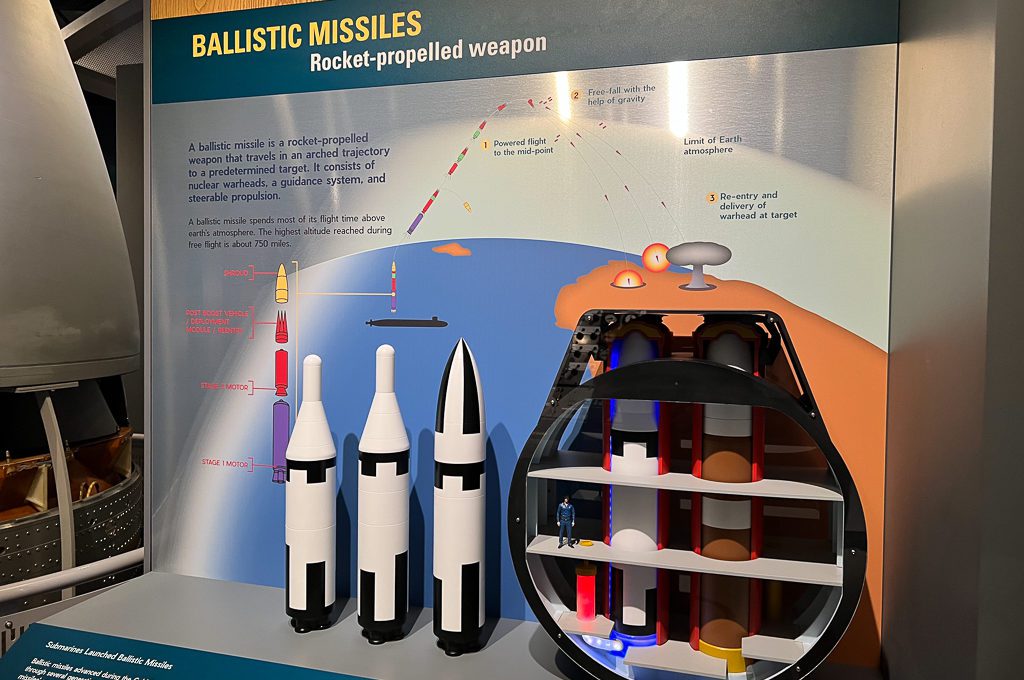
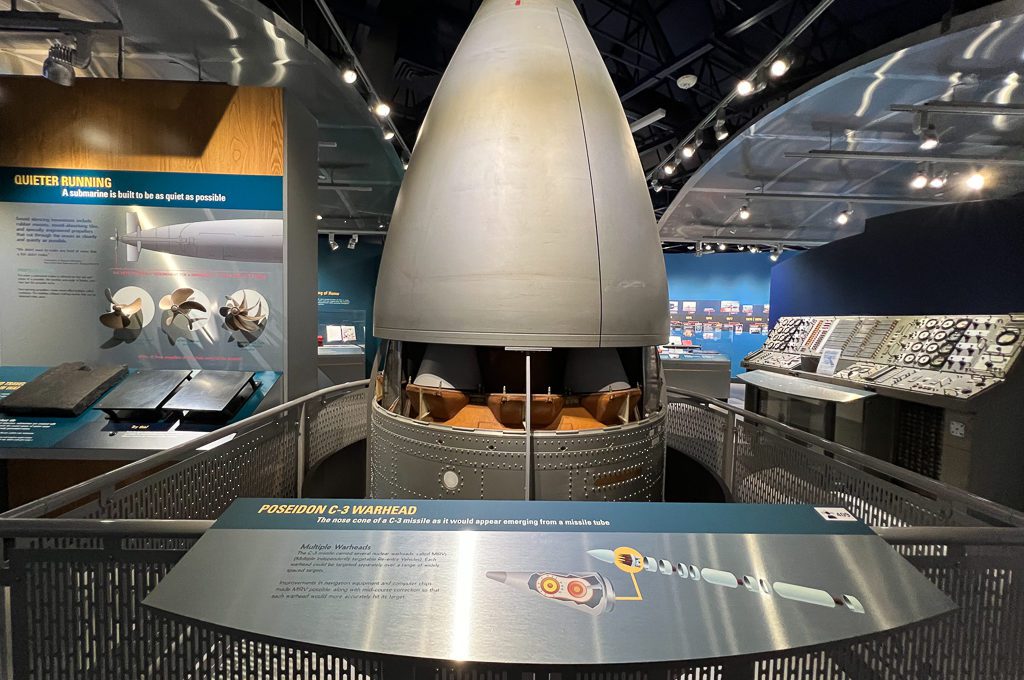
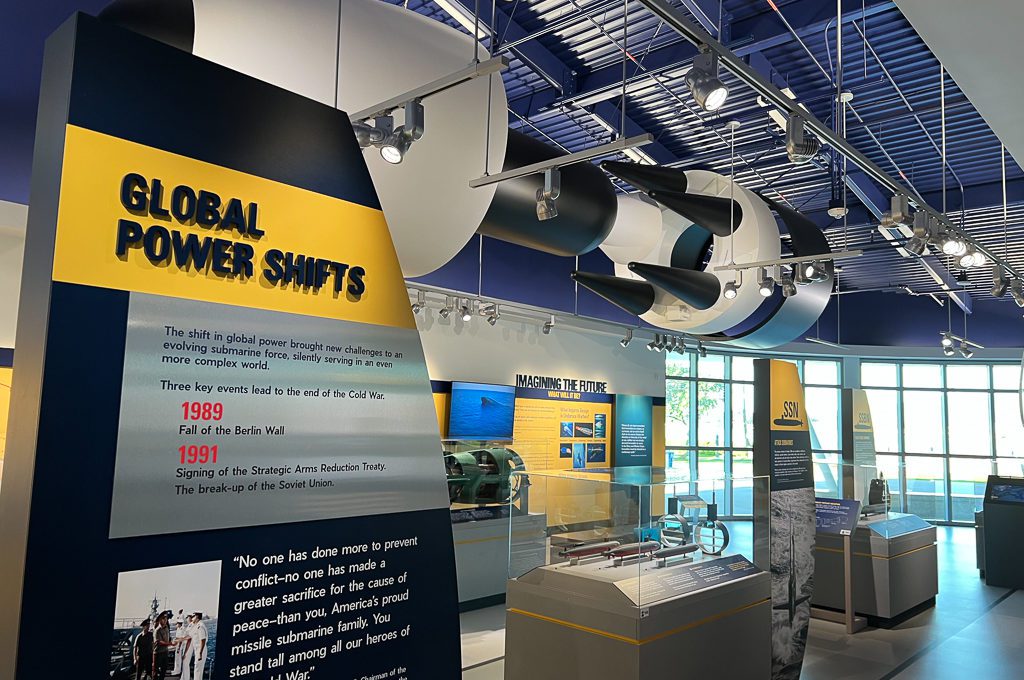
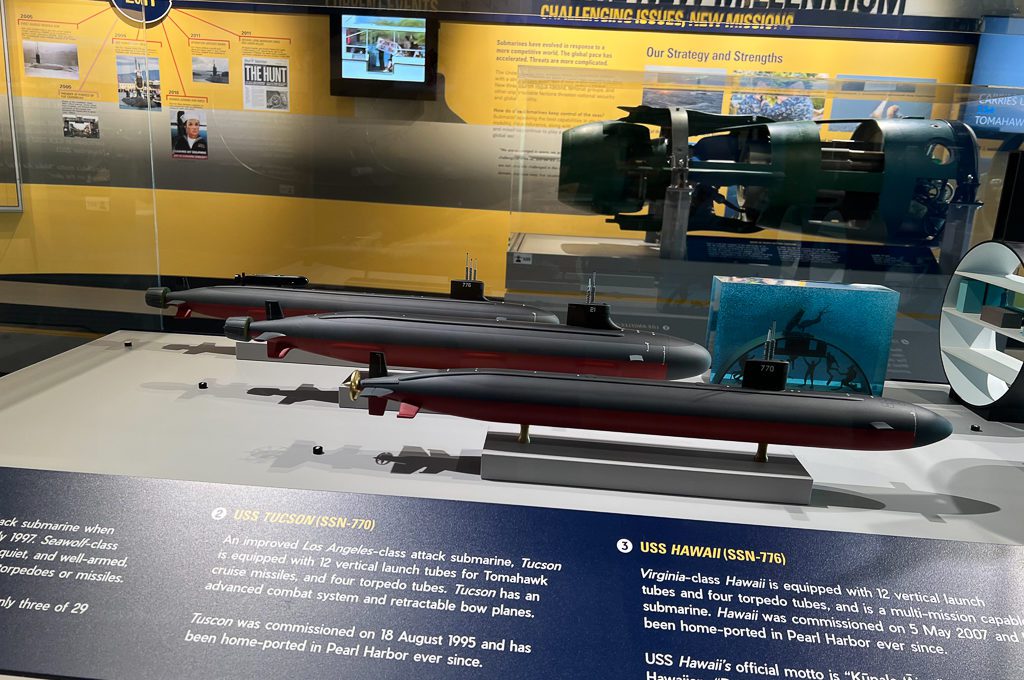
Once you finish up in the museum, there are some exhibits outside for you to check out. One of the most interesting is the conning tower from the USS Parche.
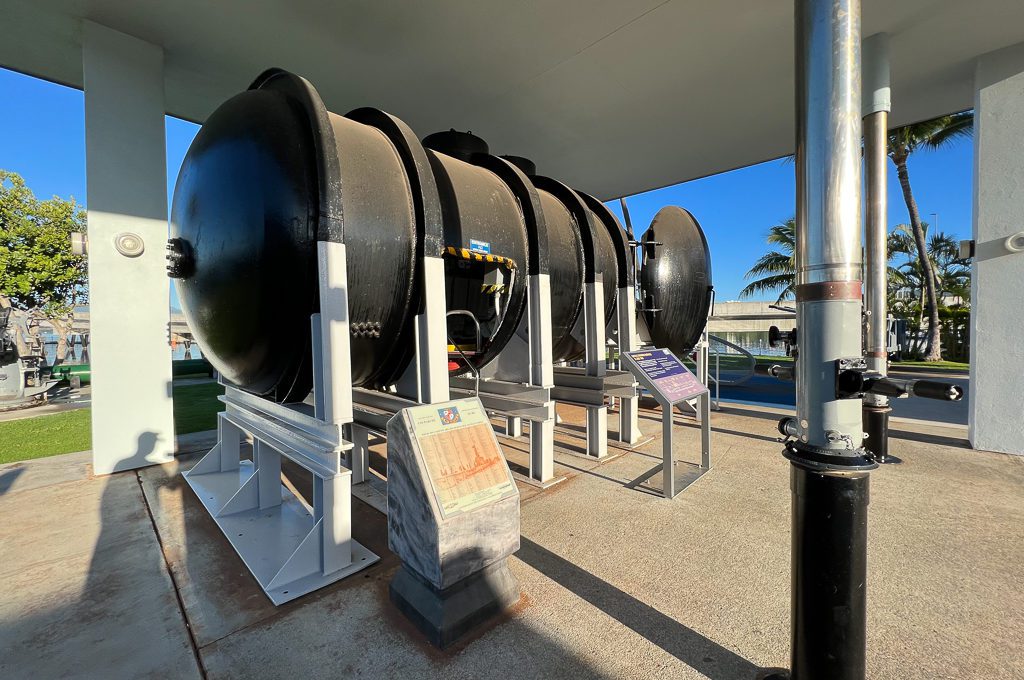
You may not be able to access the conning tower in the Bowfin, so this is your chance to see what it’s like inside one.
This is the compartment where torpedoes were launched from controls and where they made calculations for when and how to fire.
While the periscope in the conning tower does not function, there is a periscope nearby that you can view and see how powerful that magnification was.
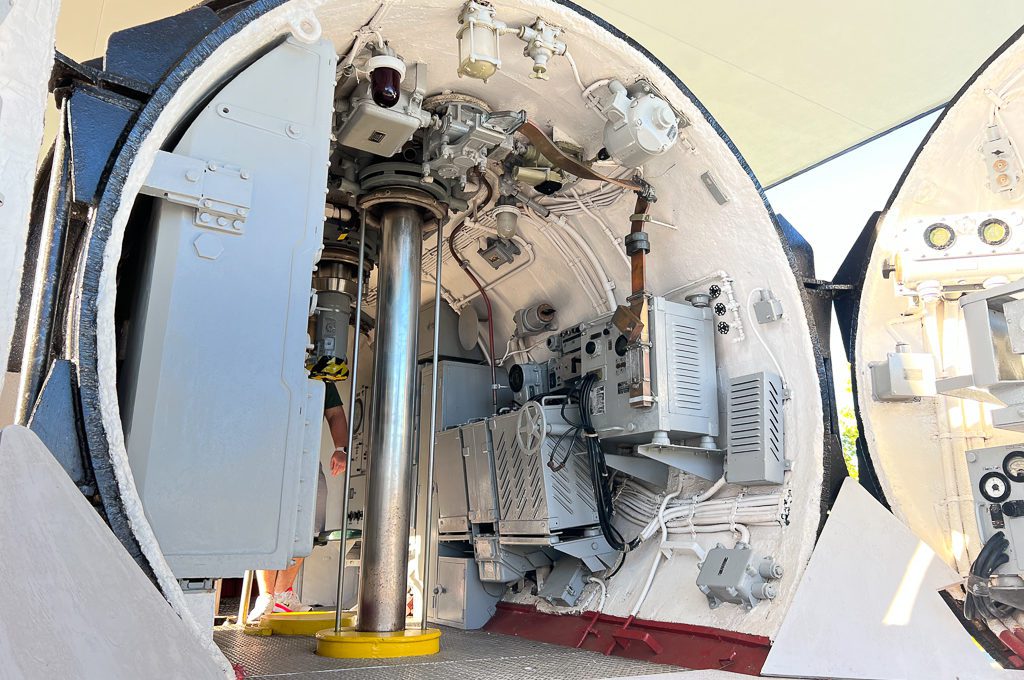
You’ll also find a lot of missiles and torpedoes outside, including a Mark 14 torpedo.
Taking a look at the massive size of it, you can imagine how difficult it was to transport these torpedoes into the tight quarters of a submarine.
The Mark 14s were problematic torpedoes used during the first couple of years of the war.
It had issues with accuracy and detonation.
Many sailors endured the frustrating experience of listening to a torpedo hit the hull of an enemy ship only to fail to explode.
But eventually the Mark 18 torpedo came around and fixed some of those issues.
It also had issues but it came with the added benefit of not producing a wake of bubbles or turbine exhaust pointing back to the submarine firing it, which made it much harder for ships to track where the submarine was.
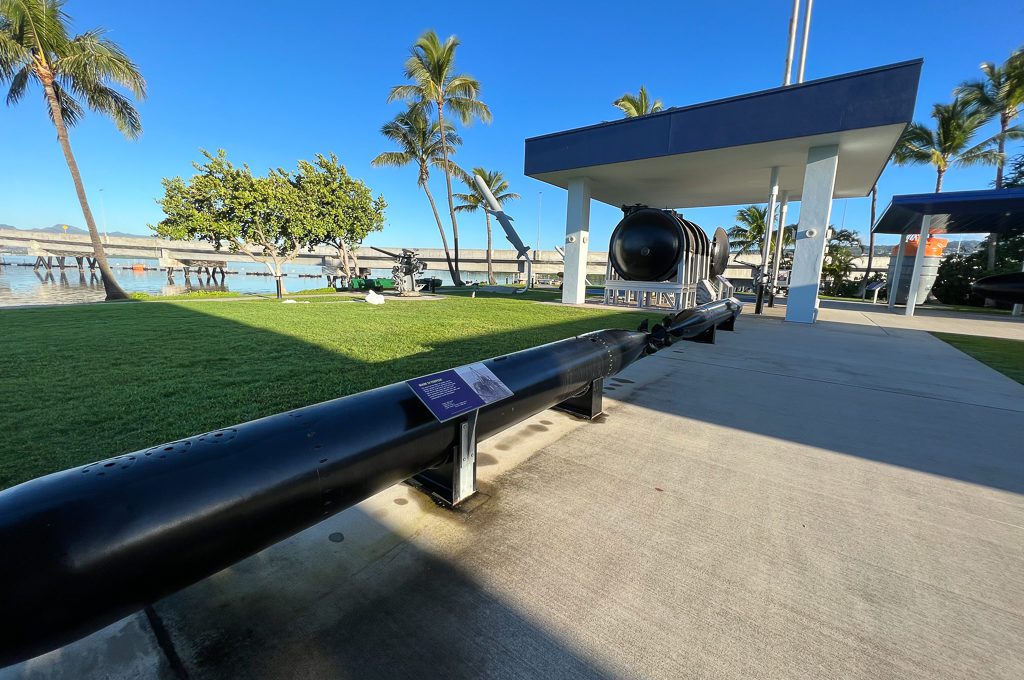
I thought it was interesting to check out one of the guns and take a view of the sites the same way someone working the gun would have nearly 80 years ago.
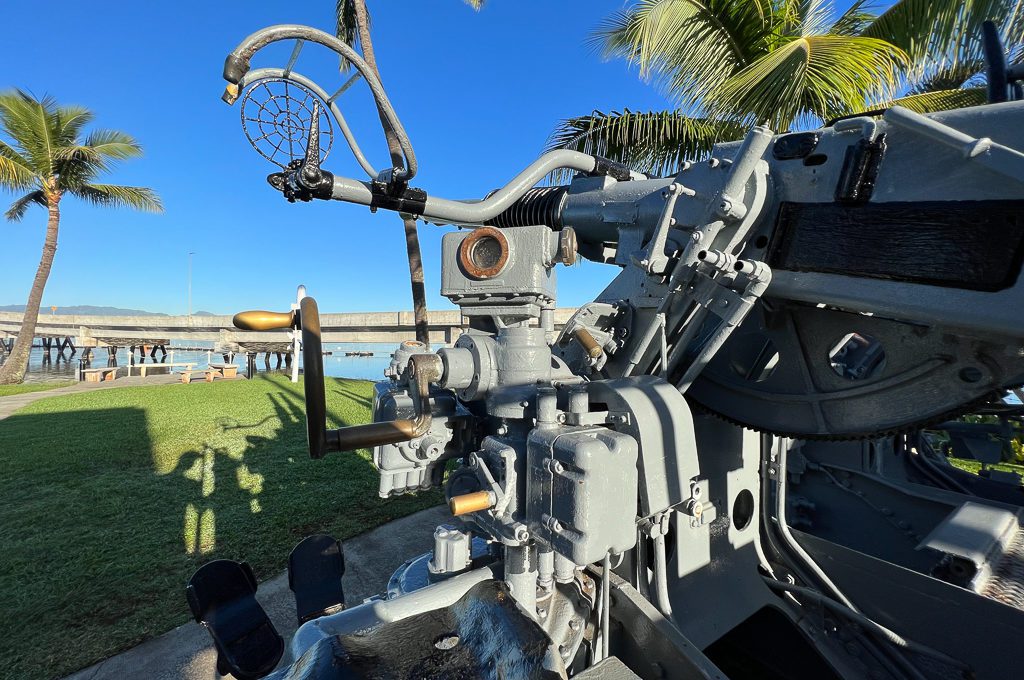
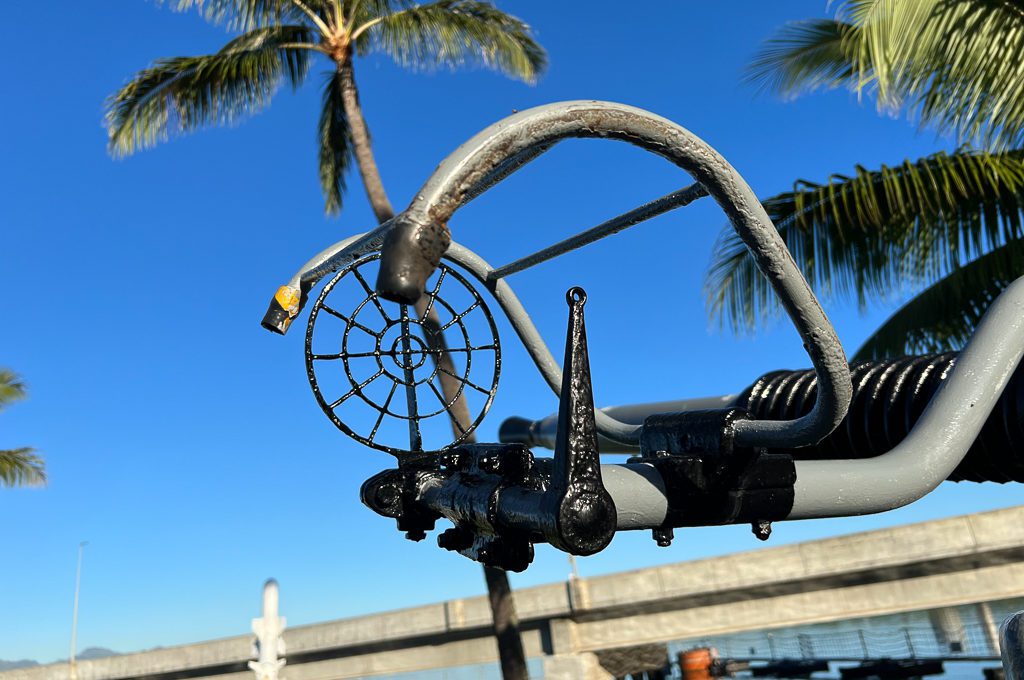
The submarine rescue chamber is another one of the more interesting things to check out.
It was only used one time during a tragic training accident but it did end up saving the lives of 33 people. There’s an illustration by the chamber that shows how it works.
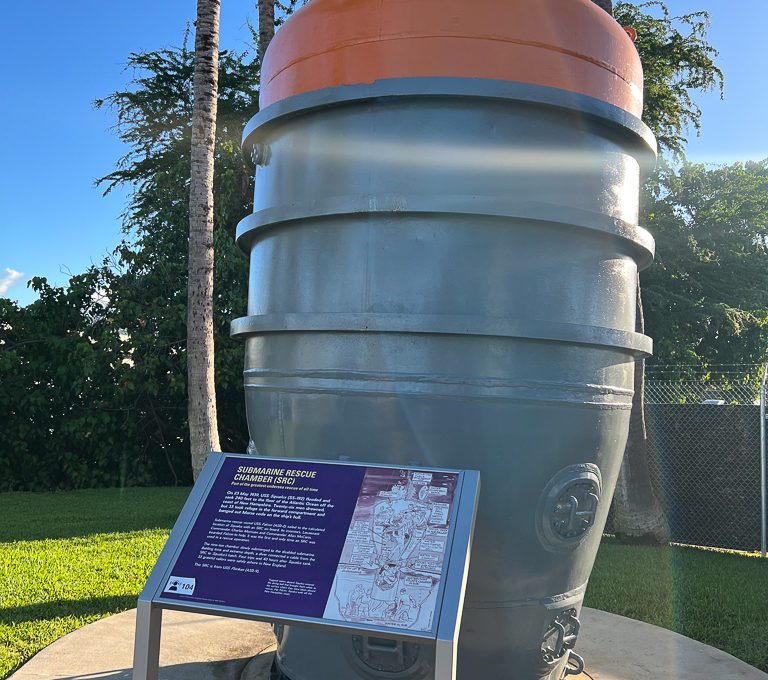
And finally there is the waterfront memorial which pays tribute to all of the submarines lost in World War II, although that is located outside of the submarine campus area.
After we checked out the submarine and museum, we did the USS Arizona tour and then by that time we had worked up a little bit of an appetite.
So we came back here to eat at Jake’s food truck and found that the food was actually pretty good for a museum food truck (we went with the chicken meals).
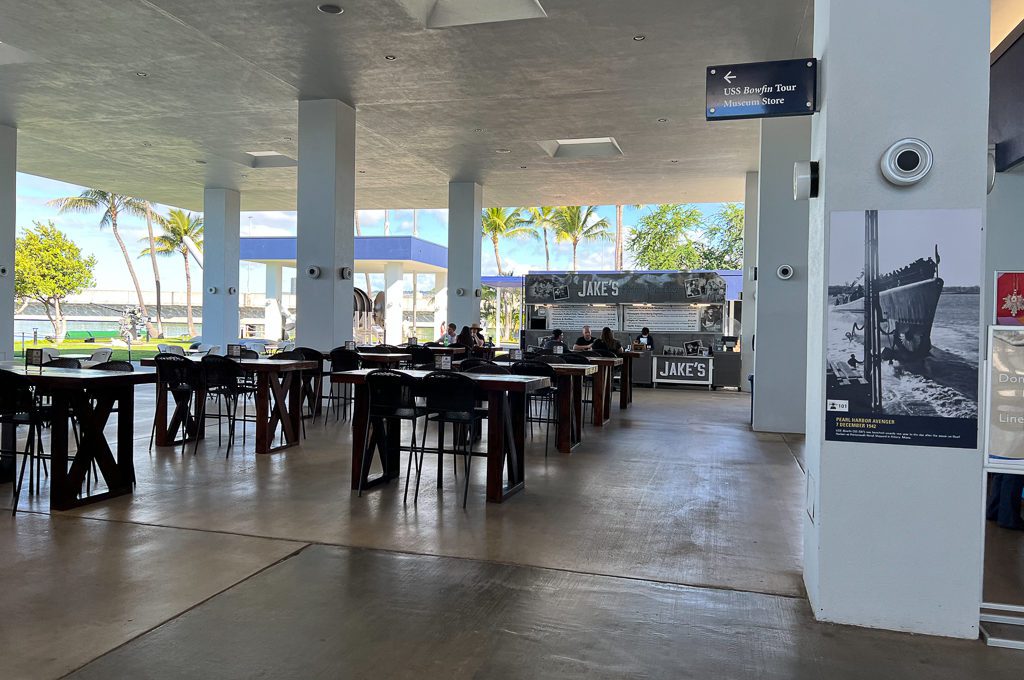
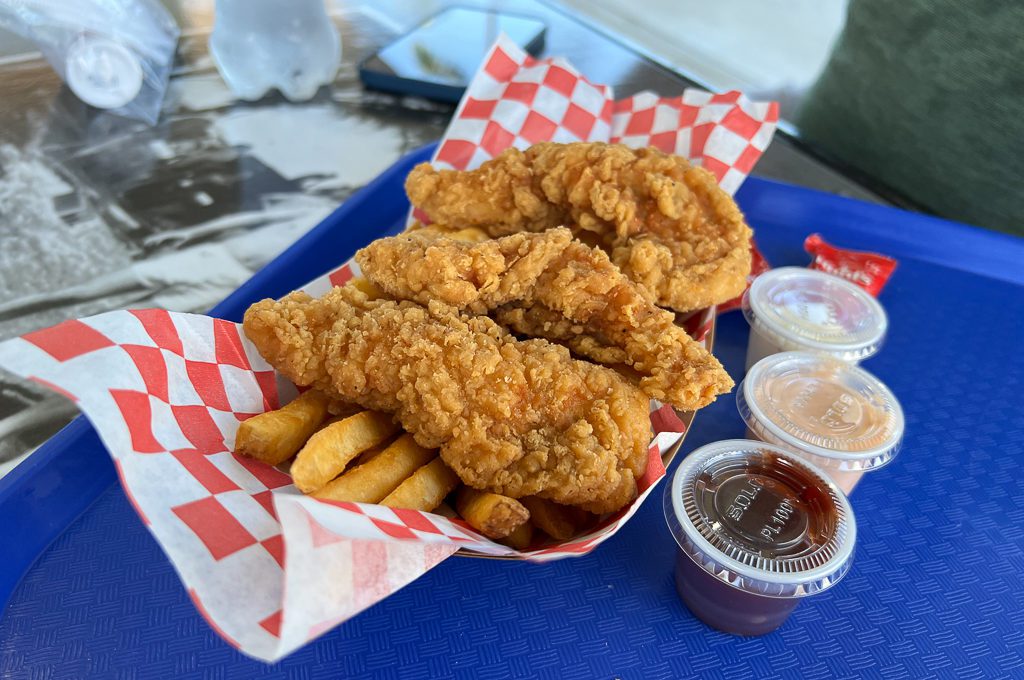
We also made a quick pass through the gift shop which had a decent amount of things in there but we are not really gift shop people.
I kind of regret not purchasing one of these cool bullet planes pictured below especially because the purchase would go to help support the museum.
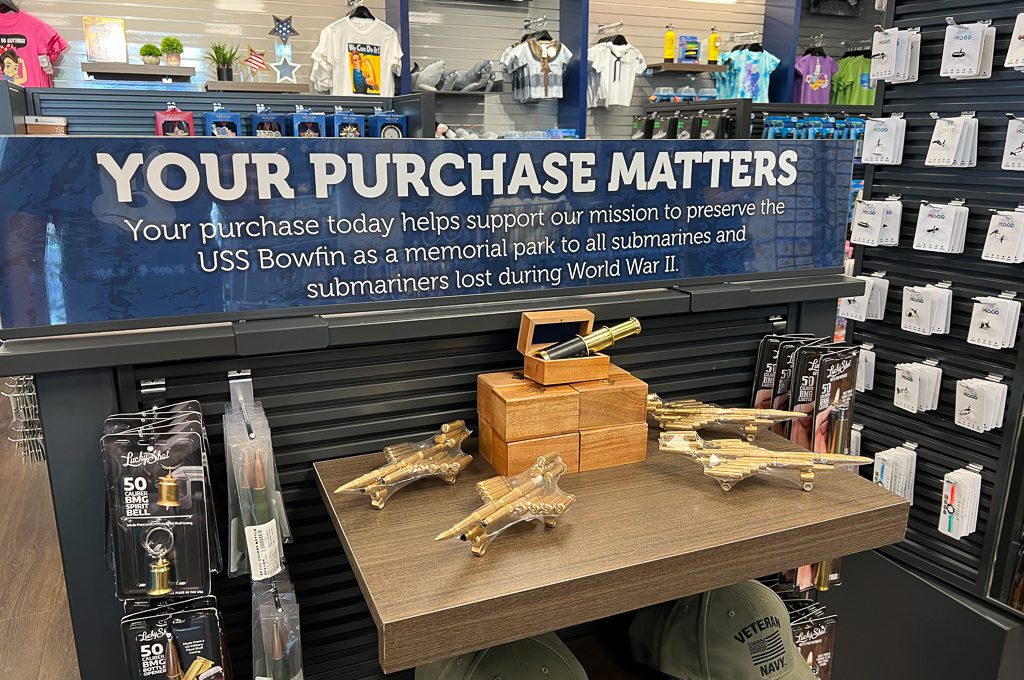
Final word
I really like this museum because I thought it was the perfect size.
There’s already so much to see at Pearl Harbor that you don’t really want a huge museum here and this gives you enough to keep you interested but not so much that you get overwhelmed.
If you plan on checking out the Bowfin submarine then I would highly recommend to also check out this museum because it will just give you a lot more context for what it was like on a submarine and the role that they played in the war.
Daniel Gillaspia is the Founder of UponArriving.com and the credit card app, WalletFlo. He is a former attorney turned travel expert covering destinations along with TSA, airline, and hotel policies. Since 2014, his content has been featured in publications such as National Geographic, Smithsonian Magazine, and CNBC. Read my bio.

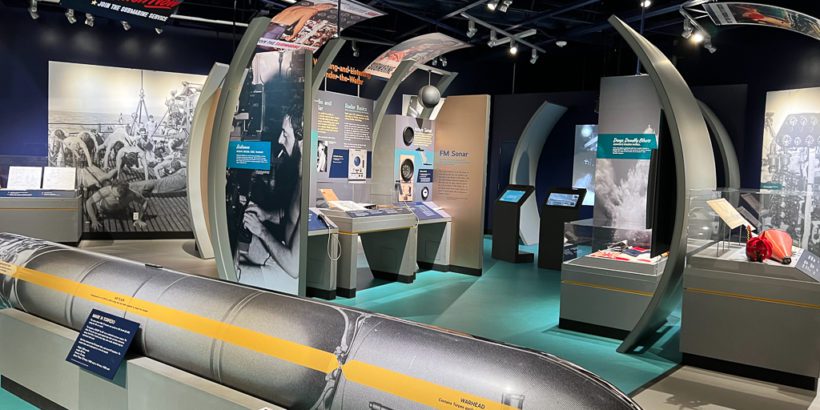
I visited the Pacific Fleet Submarine Museum on Tuesday, July 5th. After touring the USS Bowfin, we had our photo taken. Ont the way home I realized the photo was lost and I returned to Pearl harbor to retrieve it, however, was unable to locate it. I reported it to the ranger who directed me to the Administration office. There I met Raphael Escalera who took a keen interest in my predicament. I was able to leave my contact information and I’m happy to say, the next day, I had my photo returned. I want to thank Raphael for his interest in making this happen… Great job Raphael and many thanks, also not to forget the ranger who found it and returned it to the booth… thank You!!!